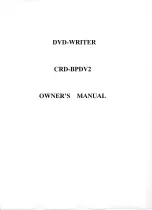
20 Gear Drive, Plymouth Ind. Park, Terryville, CT 06786
Tel: (860) 585-1254 Fax: (860) 584-1973 http://www.amci.com
Networked Indexer/Driver User Manual
SD17060E-K & SD31045E-K S
PECIFICATIONS
15
Driver Functionality (continued)
Idle Current Reduction
Idle Current Reduction allows you to prolong the life of your motor by reducing its idling temperature. Values
for this parameter range from 0% (no holding torque when idle) to 100%.
Idle current reduction should be used whenever possible. By reducing the current, you are reducing the I
2
R
losses in the motor. Therefore, the temperature drop in the motor is exponential, not linear. This means that
even a small reduction in the idle current can have a large effect on the temperature of the motor.
Note that the reduction values are “to” values, not “by” values. Setting a motor current to
4 Arms and the current reduction to 25% will result in an idle current of 1 Apk. (The Net-
worked Driver always switches from RMS to peak current control when the motor is idle to
prevent motor damage due to excessive heating.)
Current Loop Gain
This feature gives you the ability to adjust the gain of the power amplifiers in the Networked Driver to match
the electrical characteristics of your motor. The value of this parameter can range from 1 to 40 with 40 repre-
senting the largest gain increase. In general, using a larger gain will increase high speed torque but the motor
will run louder. A lower gain will offer quieter low speed operation at the cost of some high speed torque.
The use of this feature is completely optional and you can leave the Current Loop Gain at its default setting of
“1” for standard motor performance.
Available Inputs
Each Networked Driver has three DC inputs that accept 3.5 to 27Vdc signals. (5 to 24Vdc nominal) They can
be wired as differential, sinking, or sourcing inputs. How the Networked Driver uses these inputs is fully pro-
grammable as well as their active states. (Each input can be programmed to act as a Normally Open (NO) or
Normally Closed (NC) input.)
Home Input
Many applications require that the machine be brought to a known position before normal operations can
begin. This is commonly called “homing” the machine or bringing the machine to its “home” position. Each
Networked Driver allows you to define this starting position in two ways. The first is with a Position Preset
Command. The second is with a sensor mounted on the machine. When you define one of the inputs as the
Home Input, you can issue commands to the Networked Driver that will cause the unit to seek this sensor.
How the Networked Driver actually finds the home sensor is described in the reference chapter
starting on page 51.
CW Limit Switch or CCW Limit Switch
Each input can be defined as a CW or CCW Limit Switch. When used this way, the inputs are used to define
the limits of mechanical travel. For example, if you are moving in a clockwise direction and the CW Limit
Switch activates, all motion will immediately stop. At this point, you will only be able to move in the counter-
clockwise direction.
Start Indexer Move Input
Indexer Moves are programmed through the Network Data like every other move. The only difference is that
Indexer Moves are not run until a Start Indexer Move Input makes a inactive-to-active state transition. This
allows a Networked Driver to run critically timed moves that cannot be reliably started from the network due
to data transfer lags.
If Inputs 1 and 2 are programmed as quadrature encoder inputs and Input 3 is programmed as a Start Indexer
Move Input, then the quadrature encoder position data will be captured whenever Input 3 transitions. An inac-
tive-to-active state transition will also trigger an Indexer Move if one is pending.
















































